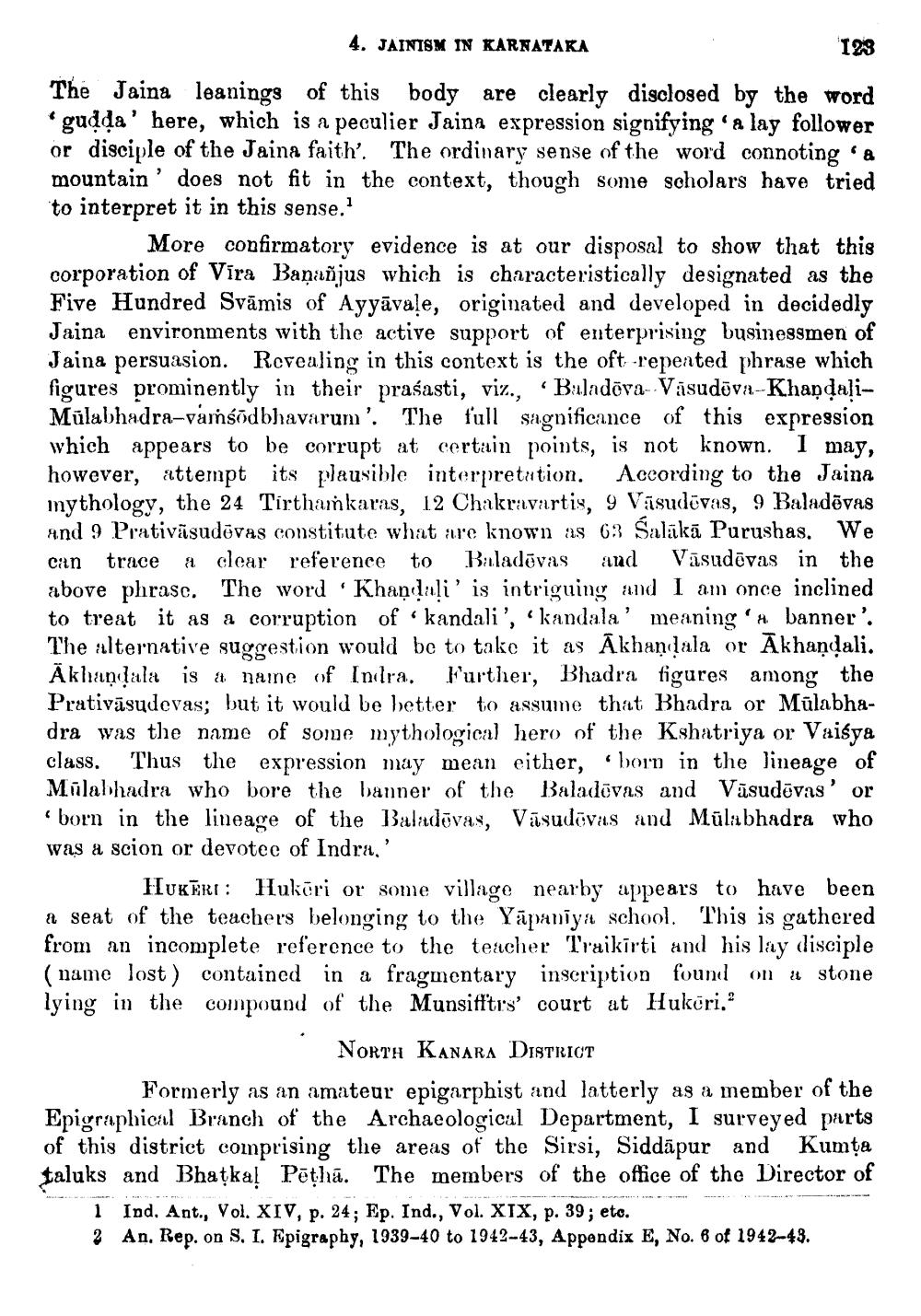________________
4. JAINISM IN KARNATAKA
123 The Jaina leanings of this body are clearly disclosed by the word
gudda' here, which is a peculier Jaina expression signifying 'a lay follower or disciple of the Jaina faith'. The ordinary sense of the word connoting a mountain' does not fit in the context, though some scholars have tried to interpret it in this sense.'
More confirmatory evidence is at our disposal to show that this corporation of Vira Baņañjus which is characteristically designated as the Five Hundred Svāmis of Ayyāvale, originated and developed in decidedly Jaina environments with the active support of enterprising businessmen of Jaina persuasion. Revealing in this context is the oft-repented phrase which figures prominently in their praśasti, viz., B:ladova-Vásudova-KhapdaliMūlabhadra-vaṁsādbhavarum'. The full sagnificance of this expression which appears to be corrupt at certain points, is not known. I may, however, attempt its plausible interpretation. According to the Jaina mythology, the 24 Tirthamkaras, 12 Chakravartis, 9 Vísudovas, 9 Baladēvas and 9 Prativāsudėvas constitute what are known as 63 Salākā Purushas. We can trace a clear reference to Baladövas and Väsudovas in the above phrasc. The word · Khandaļi' is intriguing and I am once inclined to treat it as a corruption of kandali', 'kandala' meaning' 4. banner'. The alternative suggestion would be to take it as Ākhandala or Ākhandali. Äkhunala is a naine of Indra. Further, Bhadra figures among the Prativāsudevas; but it would be better to assume that Bhadra or Mūlabhadra was the name of some mythological hero of the Kshatriya or Vaisya class. Thus the expression may mean either, • born in the lineage of Mūlabhadra who bore the banner of the Baladovas and Väsudovas' or " born in the lineage of the Baladovas, Vāsudovas and Mūlabhadra who was a scion or devotee of Indra. '
HUKĒRO: Huköri or some village nearby appears to have been & seat of the teachers belonging to the Yāpanīya school. This is gathered from an incomplete reference to the teacher Traikirti and his lay disciple (name lost) contained in a fragmentary inscription found on a stone lying in the compound of the Munsifftrs' court at Hukori."
NORTH KANARA DISTRICT
Formerly as an amateur epigarphist and latterly as a member of the Epigraphical Branch of the Archaeological Department, I surveyed parts of this district comprising the areas of the Sirsi, Siddāpur and Kumta taluks and Bhatkaļ Pētha. The members of the office of the Director of
1 Ind. Ant., Vol. XIV, p. 24; Ep. Ind., Vol. XIX, p. 39; etc. 2 An, Rep. on S. I. Epigraphy, 1939-40 to 1942-43, Appendix E, No. 8 of 1942-43.




